What is a Diffraction Grating?
- A diffraction grating is similar to double slit diffraction, except there are hundreds if not thousands of parallel slits, and the spacing between them is very small.
- The separation of slits, d is very small, which leads to large values of sinθ.
- It leads to diffraction patterns being very clearly defined, with maxima being very bright and minima being very dark.
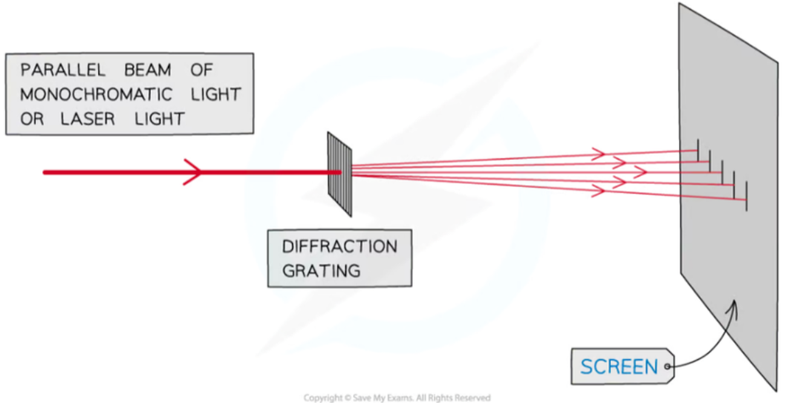
- Most grating plates are so fine that it is not possible to discern individual slits.
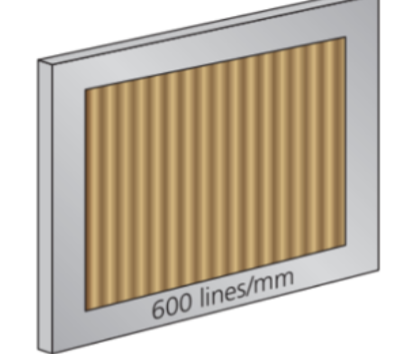
Intensity Graphs
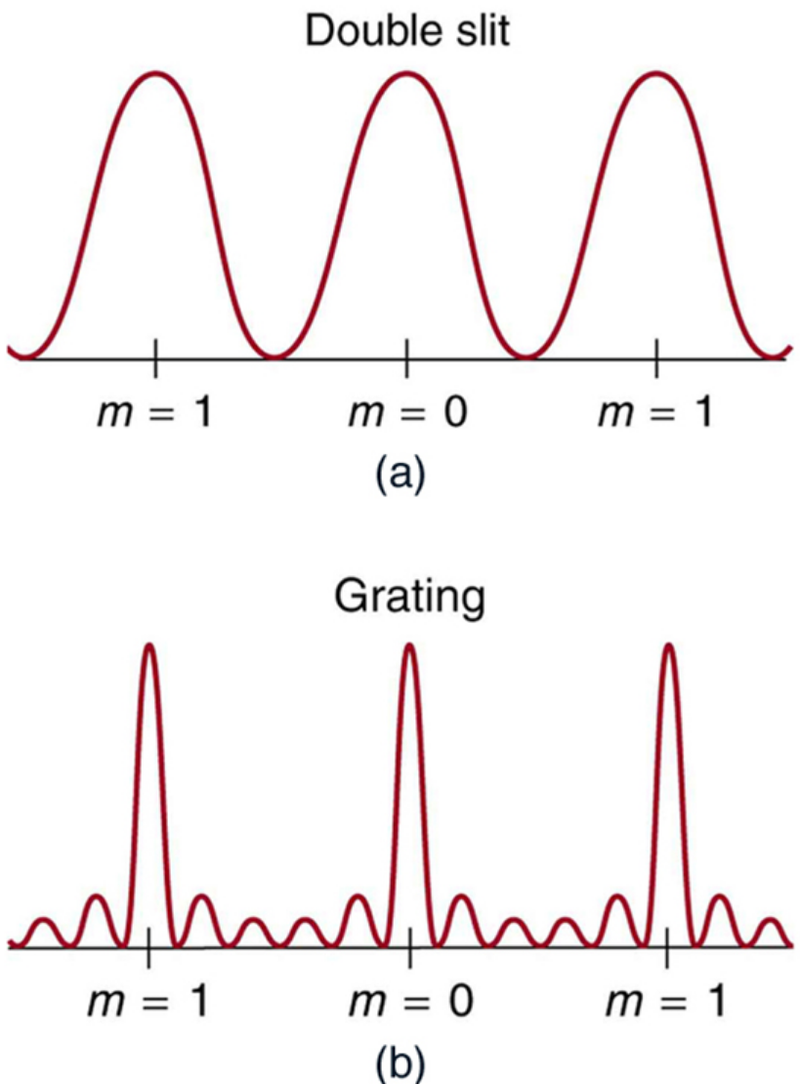
- As you increase the number of slits, the principle maxima (the maxima from the original two-slit diffraction pattern) stay the same in intensity, and the new maxima between them get smaller and smaller.
- Eventually, if you increase the number of slits to the levels that are in a diffraction grating, the non-principal maxima become almost infinitely small in intensity and thus aren't discernible, leaving only the principal maxima.
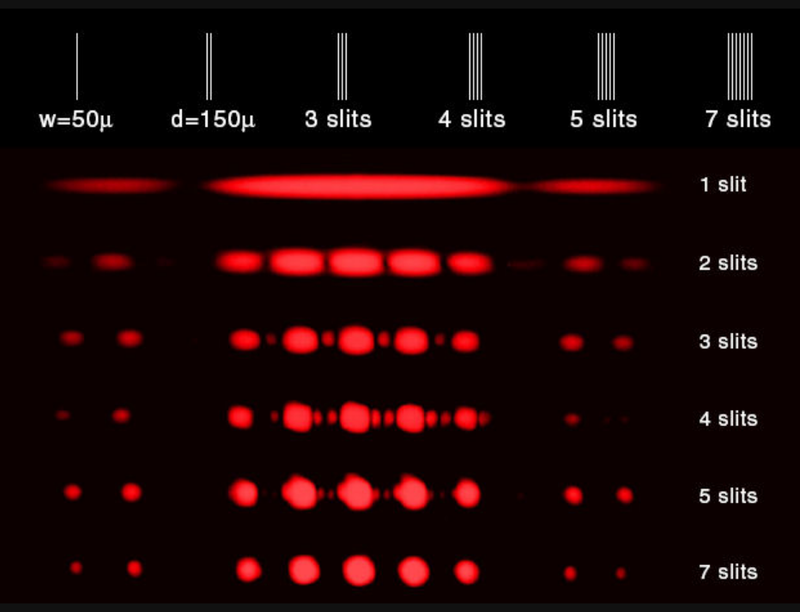
- Similar to double-slit diffraction, the intensity spikes get weaker the further you go out, although often the effect is minimal enough to be disregarded.
Diffraction Grating Calculations
- Diffraction gratings can be described using the formula:

- As d is the distance between adjacent slits, it is the inverse of the number of slits per meter, N.
d = 1/ N
- In some cases N describes the number slits per millimeter or centimeter, etc. in such cases d would also be in the respective unit used, so it should be converted into meters before doing calculations.
Angular Separation
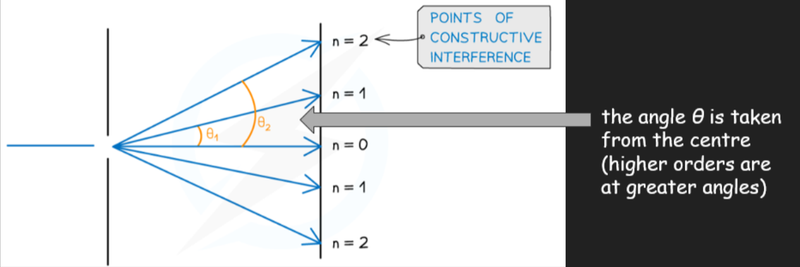
- The highest visible order of maxima in a diffraction grating is when θ = 90°, thus sinθ = 1.
- Therefore we can find the number of the highest visible maxima through:

- n must be equal to an integer.
Affect of Wavelength
- The angle of diffraction, θ, is directly proportional to the wavelength of light, λ.
- This means that the width of the bright maxima or fringe is also proportional to the wavelength.
- For example, red light, which has the longest wavelength of visible light, will produce a diffraction pattern with wide fringes.
- Blue light, which has a much shorter wavelength, will produce a diffraction pattern with narrower fringes.
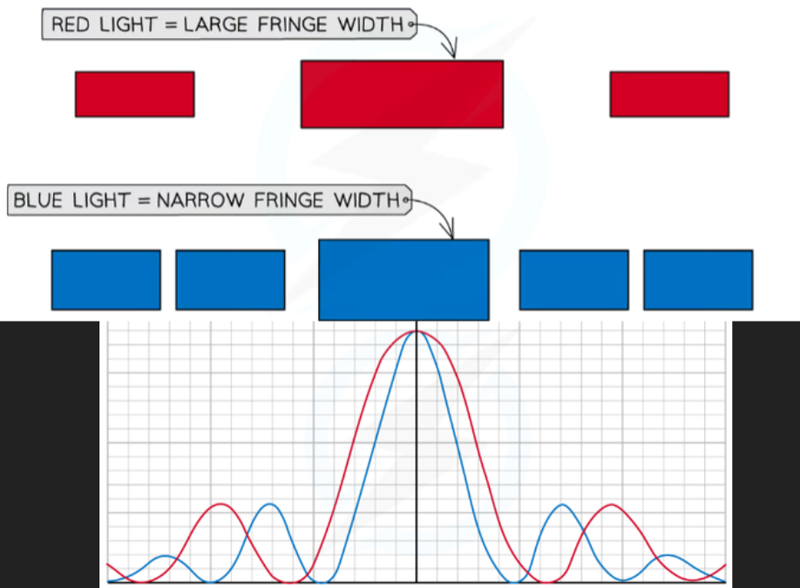
Diffraction Spectrum for Light
If the laser were to be replaced by a non-laser source emitting white light then:
- The central maxima would be white.
- All maxima would be composed of a spectrum.
- The shortest wavelength (violet/blue) would appear nearest to the central maximum.
- The longest wavelength (red) would appear furthest away from the central maximum.
- The colors look blurry and further away from the central maxima as the fringe spacing gets so small that the spectra eventually merge without any space between them.
- As the maxima move further away from the central maximum, the wavelengths of blue color observed decrease and the wavelengths of red observed increase.
- The fringe spacing would be smaller and the non-central maxima would be wider.
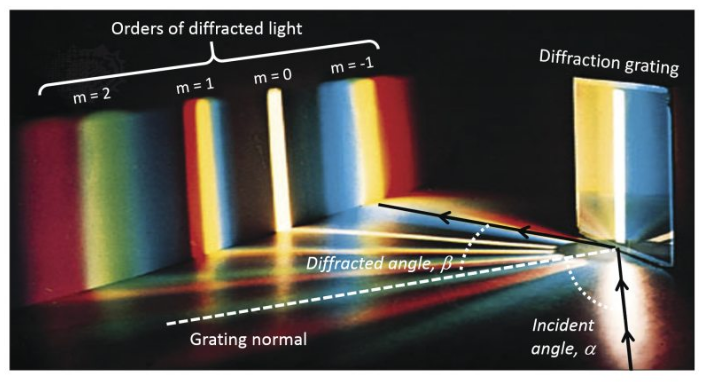
- The separation of colors occurs due to the different wavelengths, leading to dispersion.
- This is why monochromatic light is most often used for all slit diffraction.
Sources